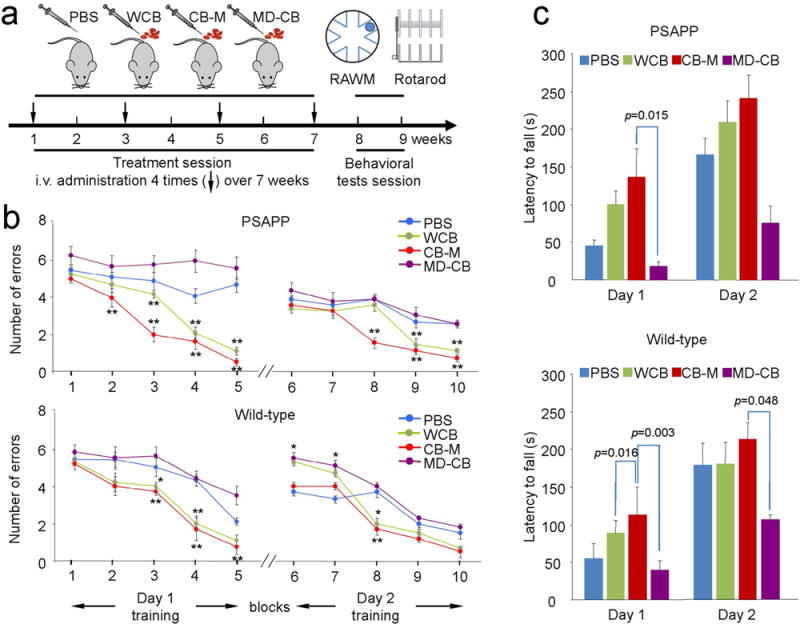Figure 2.

Short-term (2-month) administration of HUCBC-derived monocytes improves learning, memory, and motor function. Both PSAPP and age-matched WT control mice were tested after short-term systemic administration of monocytes (a). Schematic illustration of HUCBC treatment schedule and testing for cognitive and motor function in PSAPP and WT mice. (b) The cognitive function was presented as numbers of entry arm errors before finding the platform. WCB- and CB-M-treated PSAPP mice showed better behavioral performance than PBS-treated group. In addition, CB-M-treated PSAPP mice showed improve behavioral performance than WCB-treated group. In contrast, MD-CB-treated group showed no cognitive improvement. WT littermates also showed similar tendency at each treatment condition. (c) Motor function was also assessed using rotarod test after treatment. WCB-treated PSAPP mice showed enhance motor activity, reflected as enhanced latency to fall, but not statistically significant compared to PBS-treated group. CB-M-treated PSAPP mice showed significantly improved motor activity compared to MD-CB-treated mice on day 1. Similarly, CB-M-treated WT control mice showed significant improvement in motor activity compared to MD-CB-treated group on both days 1 and 2. All data are presented as mean ± SEM (*p < 0.05; **p < 0.01) and analyzed by one-way analysis of variance (ANOVA) with LSD post hoc test (b), or one-way ANOVA with Bonferroni post hoc test (c).
